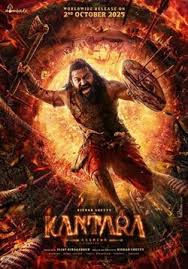Kantara Chapter 1: A Deep Dive into Rishab Shetty’s Masterpiece

Introduction
‘Kantara Chapter 1’ has emerged as a significant cinematic experience in Indian cinema, particularly for its intricate storytelling and cultural representation. Directed by Rishab Shetty, who also stars in the lead role, this film has not only won critical acclaim but has also resonated with audiences across the nation. Its release has sparked conversations about tradition, identity, and the challenges faced by rural communities in India, making it a relevant topic in today’s society.
Plot Overview and Cinematic Elements
Set against the backdrop of a rustic village in Karnataka, ‘Kantara Chapter 1’ weaves a tale of conflict over land and cultural heritage. The character played by Rishab Shetty is an embodiment of local lore and tradition, facing adversities that reflect real societal issues. The film’s narrative is enriched with authentic elements highlighting the significance of the land and traditional practices. The use of local dialect and folklore serves to immerse viewers in the vivid cultural landscape of the region.
Critical Reception
Upon its release, ‘Kantara Chapter 1’ received rave reviews from both critics and audiences alike. Critics praised Rishab Shetty not only for his acting prowess but also for his directorial vision that brings out the essence of the characters and their struggles. The film’s unique blend of action, drama, and cultural storytelling has set it apart from other releases this year. Box office reports indicate that the film has performed remarkably well, drawing audiences to theaters and sparking discussions on various social media platforms.
Significance and Future Outlook
‘Kantara Chapter 1’ stands as a testament to the evolving landscape of Indian cinema, where regional stories find broader acceptance. The film has opened doors for more narratives that emphasize cultural roots and social issues, breaking the barriers of conventional filmmaking. Looking ahead, it is likely that follow-up chapters will continue to explore deeper themes introduced in this installment, further solidifying Rishab Shetty’s role not just as an actor but as a significant storyteller in the industry.
Conclusion
In summary, ‘Kantara Chapter 1’ featuring Rishab Shetty is more than just a film; it is a reflection of cultural identity and a beacon of regional storytelling. As the film continues to gain traction in the box office, its impact on audiences and the film industry heralds a new era of narratives that celebrate local stories with ambition and depth.









